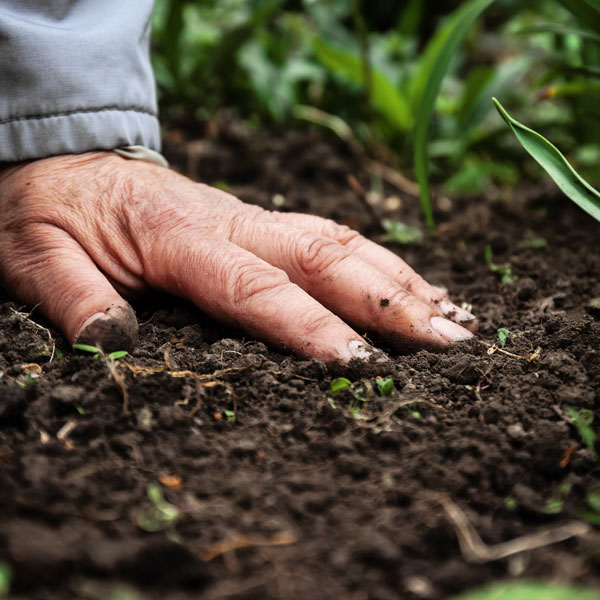Pelletized lime
Lime treatment for lawns
Are you regularly fertilizing and watering your yard, but it’s still struggling? The reason could be because your lawn’s soil is too acidic. Applying limestone is often one of the most overlooked aspects of lawn management, yet it’s one of the most critical components.
GreenAce Lawn Care’s Complete Program includes pelletized limestone because it’s extremely important to your lawn’s health. Read on to learn more about the benefits of pelletized lime.

New England’s soil is acidic
New England’s soil is naturally acidic, which means its pH level is below – or sometimes well below – neutral. PH stands for “potential of hydrogen” and is the measurement of how acidic or alkaline a solution is. PH is measured on a scale of zero to 14, with zero being very acidic, 14 being the strongest base, and seven being neutral.
When soil is too acidic, the amount of nitrogen available to plants decreases, and some micronutrients, such as iron and manganese, might become so soluble that they can be toxic to turf. Acidic soil can also limit how effective pesticides are, lowering the success rate of products like our grub preventive.
As you can see, soil that is too acidic can harm your lawn. There are two ways to test whether your soil needs lime. One is the basic eye test: If your lawn’s green color looks washed out, it may be failing to consume and use the proper amount of nutrients even if you’re regularly applying fertilizer. The second is to test your soil’s pH level by taking a soil sample and sending it to a lab for testing. We offer pH soil testing as an add-on service.
Measuring soil pH
We conduct a soil pH test by taking a routine soil sample and sending it to a lab. The turnaround time between taking a sample and being shipped the results can take upwards of two weeks or more depending on the time of year. It tends to take longer to receive results in the spring than in the summer or fall. The best time to measure the pH level is in the fall, but it can be done at any time during the year.
How pelletized lime works
As part of our Complete Lawn Program, we apply pelletized limestone to your property. Pelletized lime neutralizes your acidic soil by removing hydrogen ions from it. The amount of lime we apply as part of our Complete Lawn Program typically offsets the acidic material we introduced to your soil from the fertilizer applications. If you were to apply additional lime, the amount of lime that should be applied will depend on the soil test conducted and the calcium carbonate equivalence of the lime used.
Your next question might be: How long until I see positive results? Every property has soil with different particle sizes, and therefore the speed at which pellet lime reacts with that soil varies.
This happens if the soil is too alkaline
Cool-season grasses grow best when they’re in soil with a pH between 6 and 7.2, which is close to neutral. When soil is too alkaline annual bluegrass can develop. Unlike Kentucky bluegrass, annual bluegrass (poa annua) is considered a weedy, undesirable grass. The plant has a shallow root system and looks unsightly when surrounded by more aesthetically pleasing cool-season grasses, such as Kentucky bluegrass, rye, and fescue.
It’s extremely difficult to control annual bluegrass, and many—if not most— control procedures prove ineffective against the aggressive weed. The best way to reduce annual bluegrass development is to physically remove it and treat the area with a pre-emergent herbicide. Several weeks later, you’ll need to overseed.
Testimonials
“Frank from GreenAce Lawn Care is very knowledgeable and very pleasant to deal with. He sends out a monthly newsletter with updates on current situations and will contact you if anything specific is needed with your lawn. When he performs a service he leaves detailed paperwork describing what he does and what is needed for care after. I feel better having Frank take care of my lawn. My previous landscaper wouldn't even leave a flag often.”
“Frank has taken care of my lawn for 2 years now. He is very professional and extremely knowledgeable about everything involving lawns and weeds. His price is also very reasonable.”
“Great service. Attention to detail. Always shows up when he says he is going to. Lawn is looking better than it has in years. Finally, a lawn care guy that I can trust.”
“GreenAce is AWESOME!! They understand lawns and are very good at service and responding to customers. I highly recommend them!”
“Prompt, reliable, thorough service!”
“Extremely pleased with GreenAce! My yard has “Cape soil” so it's tough to grow nice grass consistently. They came up with multiple ideas and were able to work within my budget to get my lawn on track. I plan on staying with GreenAce.”
Your trusted lawn care provider and lawn pest exterminator
We Service Areas of Norfolk and Bristol County, Massachusetts Including, Foxborough, Mansfield, Wrentham, Walpole, Plainville, Franklin, Norfolk, Sharon, North Attleborough, and Parts of Attleboro, Stoughton, Canton, Norwood, Norton and Medfield. Learn more about our Complete Lawn Care program.
